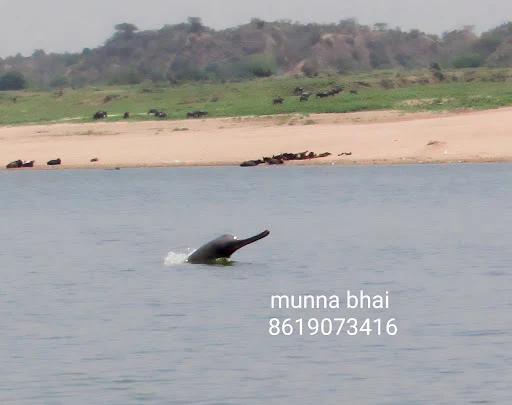Gangetic Dolphin in Chambal
https://sites.google.com/view/munnachambalsafaridholpur2025/
गंगा नदी की डॉल्फिन चम्बल नदी में
डॉल्फिन देखनी है तो धौलपुर जिले की चम्बल नदी मे आइये
Photo :- munna chambal safari dholpur rajasthan
Contact : - 8619073416
गंगा नदी डॉलफिन (Platanista gangetica gangetica) व सिंधु नदी डॉल्फिन (Platanista gangetica minor)
| गंगा एवं सिंधु नदी डॉल्फिन | |
|---|---|
 | |
| Size comparison against an average human | |
| संरक्षण स्थिति | |
 विलुप्तप्राय (IUCN 3.1)[1] | |
| वैज्ञानिक वर्गीकरण | |
| जगत: | जंतु |
| संघ: | कशेरुकी |
| वर्ग: | स्तनपायी |
| उपवर्ग: | Eutheria |
| गण: | Cetacea |
| उपगण: | Odontoceti |
| अधिकुल: | Platanistoidea |
| कुल: | Platanistidae Gray, 1846 |
| वंश: | Platanista Wagler, 1830 |
| जाति: | P. gangetica |
| द्विपद नाम | |
| Platanista gangetica (Lebeck, 1801); (Roxburgh, 1801) | |
| Subspecies | |
Platanista gangetica gangetica | |
 | |
| Ranges of the Ganges River Dolphin and of the Indus River Dolphin | |
| ध्व | |
| Thare are two species of freshwater dolphins. They are found in India, Bangladesh, Nepal and Pakistan. They are mainly found in the Ganges River and in the waters of the Indus River and the Chambal River, or the Indus River in Pakistan. On 18 May 2009, the central government declared the Ganges dolphin as the national aquatic animal of India. The Gangetic dolphin found in the river Ganges is a blind aquatic creature whose olfactory power is extremely intense. Almost extinct, at present less than 2000 numbers of this creature are left in India, the main reason of which is the increasing pollution of rivers, construction of dams and hunting. They are mainly hunted for oil which is used as bait to catch other fish. At present, Gangetic dolphins survive in a very small area from Narora in Uttar Pradesh and Patna Sahib Bhagalpur to Sultanganj in Bihar. In Bihar and Uttar Pradesh it is known as 'Sons' while in Assamese language it is known as 'Shihu'. It locates its prey and food by echolocation (echo determination) and immense abilities of smell. It is a carnivorous aquatic animal. This ancient creature has been present in India for about 100 million years. It is not a fish, it is actually a mammal. The average length of the female is greater than that of the male dolphin. Its average age has been recorded as 28 years. Emperor Ashoka took steps many centuries ago for the protection of dolphins called 'Son of River'. The central government also included the Gangetic dolphin under the purview of the Indian Wildlife Protection Act of 1972. In 1996 itself, the International Union of Conservation of Nature had also declared these dolphins as extinct. The increase in the number of dolphins in Ganga will be one of the main pillars of 'Mission Clean Ganga', as according to Union Environment and Forest Minister Jairam Ramesh, the dolphin is a sign of the health of the river Ganga, just as the tiger is a symbol of the health of the forest. | |






Comments